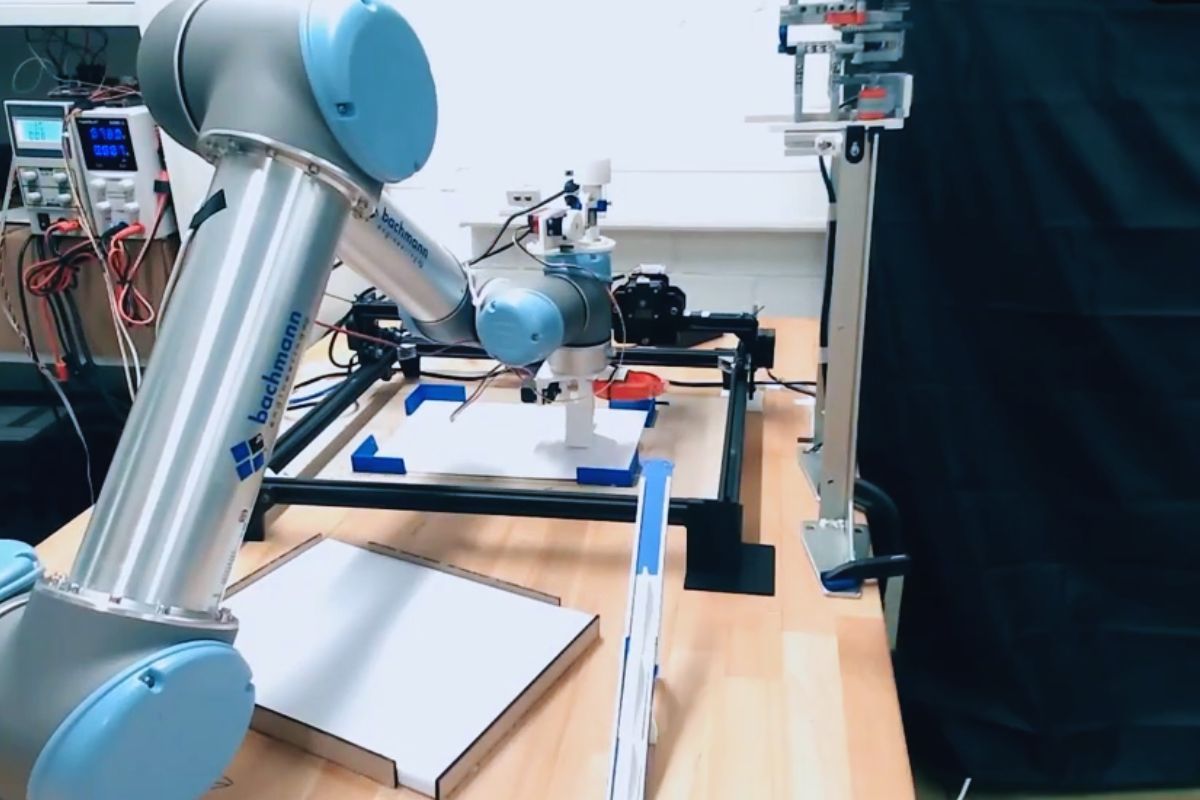Robot Crafts and Launches Paper Airplanes for Design Testing

- BY Dhiren
- August 9, 2024
- Read in 3 Minutes
A group of engineers from EPFL CREATE Lab (Computational Robot Design & Fabrication Lab) in Lausanne, Switzerland, developed and built a robot arm capable of designing, constructing, and launching paper airplanes to test their effectiveness.
Nana Obayashi, Kai Junge, Stefan Ilić, and Josie Hughes published a paper in Scientific Reports describing their robotics system.
Building paper airplanes is a rather straightforward task. A piece of paper folded into the shape of a plane, a dart, or a missile and then thrown with an arm and a hand.
Different designs by amateurs and engineers have demonstrated that various forms may have surprisingly variable performance—some can fly just a short distance before falling to the ground. In contrast, others may soar for much longer and travel considerably further.
Previous studies indicate that creating paper planes to improve flying duration and distance is mostly a trial-and-error process. In this latest task, the study team developed a robot to perform the task for them.
The task was to create a software program that could first generate the designs for a paper airplane.
Once a design finished, the software would transmit it to a robot arm, drawing and cutting it out on a single sheet of paper (initially picked from a bunch).
Also Read, Mega Influencers Urge Dunkin Donuts Boycott
Once the plane cut out, the robot arm would fold the paper into the right shape (and glue and tape any necessary parts) before placing it on a launcher. The launcher will accelerate the plane and fly it across a test site.
The researchers set up a camera to capture all the airplanes and then used statistical analysis to investigate the connection between airplane design and performance.
After their robot had built and flown over 500 planes (from more than 50 designs), the team discovered a pattern. They noticed that all of the test planes’ flights fell into one of three categories: nose drop, glide, or recovery glide.
The first was exactly what it sounded like: planes that nose-dived after takeoff. Those that glided preferred to make a straightforward, comfortable landing.
However, those with a recovery glide traveled in the glide pattern for a long time before performing a little upswing before landing, increasing their flying time and distance.
The team believes that automating such test paper airplanes might be applied to real-world aircraft design.
Also Read, Android Spyware LianSpy Evades Detection with Yandex Cloud




